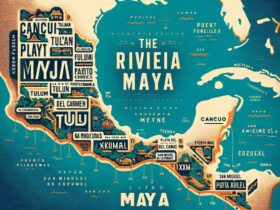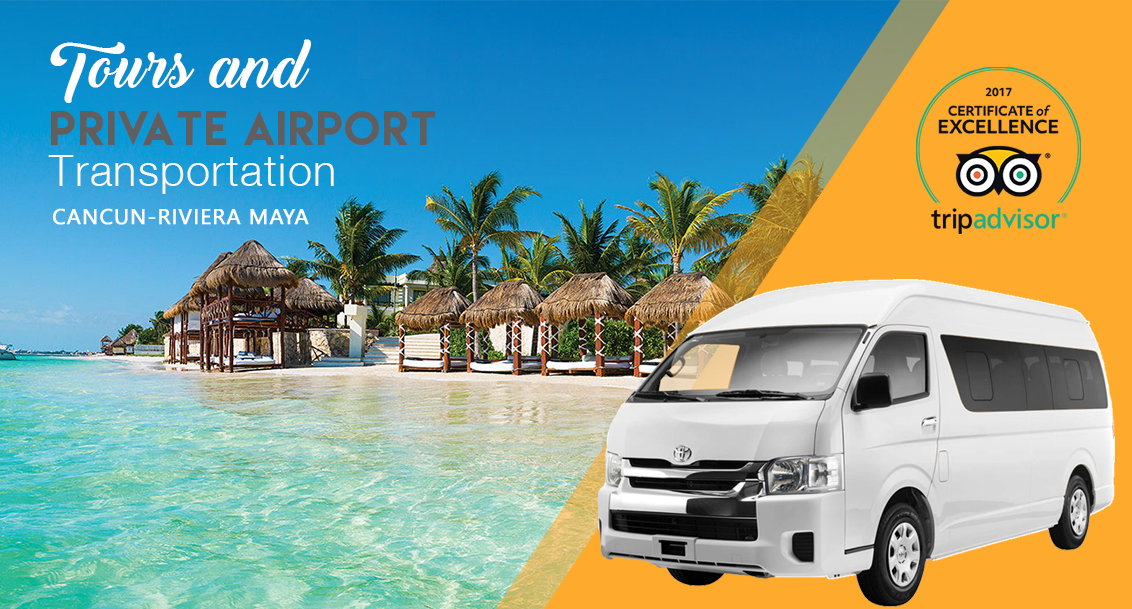
Along the sun-kissed shores of the Riviera Maya lies a hidden world of natural beauty. Here, ancient limestone formations cradle pools of crystal-clear freshwater, inviting travelers to explore their mysterious depths. These aquatic treasures, formed over millennia, offer more than just scenic views—they’re gateways to adventure and cultural discovery.
We’ll guide you through the diverse landscapes of these geological marvels. From open-air pools bathed in sunlight to shadowy underground caves adorned with stalactites, each location tells its own story. The Yucatán Peninsula’s unique ecosystem creates habitats where vibrant fish dart through submerged roots and sunlight filters through jungle canopies.
These natural wonders hold deep significance in Mayan history, serving as both water sources and sacred spaces. Today, they welcome visitors with opportunities for swimming, snorkeling, or simply marveling at nature’s artistry. Whether you’re planning family-friendly outings or adrenaline-fueled explorations, there’s something here for every type of traveler.
Key Takeaways
- Explore three distinct cenote types: sunlit open pools, partially covered grottos, and underground cave systems
- Swim in mineral-rich waters renowned for their clarity and refreshing temperatures
- Discover connections between these natural formations and ancient Mayan traditions
- Find options suitable for all activity levels, from relaxed floating to adventurous diving
- Learn about unique geological processes that shaped these aquatic landscapes
Introduction
Beneath the lush jungles of Mexico’s Yucatán Peninsula, a network of natural pools awaits discovery. These freshwater marvels captivate explorers with their striking blue hues and fascinating geological origins. For centuries, they’ve served as vital ecosystems and cultural landmarks, blending adventure with ancient history.
Overview of Article Goals
We’ve crafted this guide to help you navigate the hidden treasures surrounding one of Mexico’s most vibrant coastal towns. Whether you’re drawn to serene swimming holes or crave underground exploration, our recommendations cater to every travel style.
Here’s what you’ll gain from our insider knowledge:
- Insight into how these formations shaped local ecosystems and traditions
- Curated suggestions matching different adventure levels and interests
- Practical advice for safe, memorable visits with family or friends
From geological wonders to modern-day conservation efforts, we’ll walk you through essential details. You’ll discover how to maximize your experience while respecting these fragile environments. Let’s dive into a world where crystal waters meet rich cultural heritage!
What Are Cenotes?
Hidden beneath Mexico’s jungle floor lie natural pools that tell tales of Earth’s history and ancient civilizations. These geological marvels form when rainwater dissolves soft limestone bedrock, creating vast underground chambers. Over time, cave ceilings collapse, revealing sunlit pools connected to intricate cave systems.
Natural Formation and History
Acidic rainwater carves through limestone over millennia, creating networks like the renowned Dos Ojos cave system. This process, called speleogenesis, leaves behind crystal-clear freshwater pools. The famous cenote dos ojos showcases two connected sinkholes resembling “two eyes” – a striking example of this phenomenon.
Cultural Significance in Mayan Times
For the Maya, these waters were sacred portals to the underworld. Archaeologists have discovered ceremonial artifacts and remains in sites like Dos Ojos, evidence of rituals honoring rain gods. These pools weren’t just spiritual centers – they provided vital freshwater for thriving cities.
| Geological Feature | Cultural Role |
|---|---|
| Limestone collapse creates access points | Gateways for spiritual ceremonies |
| Interconnected cave systems | Sources of drinking water |
| Mineral-rich freshwater | Sites for sacrificial offerings |
Today, explorers can swim through the same waters that sustained an ancient civilization. Each visit becomes a journey through time, where natural wonders and human history flow together seamlessly.
Overview of Playa del Carmen cenotes
The region surrounding Mexico’s Caribbean coast boasts an extraordinary collection of freshwater gems. From sunlit lagoons to shadowy caverns, each offers distinct adventures shaped by millennia of geological artistry.
Scenic Diversity and Popular Attractions
Open-air wonders like Cenote Azul dazzle with turquoise waters and limestone cliffs perfect for daring jumps. Underground marvels such as Dos Ojos reveal intricate cave systems where sunlight dances on submerged stalactites. Semi-covered pools blend both worlds, like Jardin del Eden’s jungle-framed swimming holes.
Why do travelers prioritize these spots? Three standouts shine:
- Cenote Azul: Crystal-clear shallows ideal for families, with natural platforms for sunbathing
- Dos Ojos: Twin sinkholes connected by underwater tunnels, a paradise for snorkelers
- Gran Cenote: Pristine waters merging with Sac Actun, Earth’s longest flooded cave system
Reaching these treasures is simpler than many expect. Shared vans (colectivo playa del routes) depart frequently from central hubs, offering affordable access to multiple sites daily. This convenience lets explorers design custom itineraries—swim through azure waters by morning, then discover hidden grottos by afternoon.
Family-Friendly Cenotes for a Perfect Day
Creating unforgettable family memories starts with choosing the right aquatic playgrounds. We’ve handpicked destinations where safety meets natural beauty, offering parents peace of mind and kids endless fun.

Cenote Azul Experience
Cenote Azul shines as a top choice for families, with its gradual entry points and crystal-clear shallows. Natural limestone platforms create perfect spots for little ones to splash safely while parents relax in waist-deep turquoise waters. Don’t miss the fish-filled pools that turn swimming into an interactive nature lesson!
Kid-Friendly Facilities and Safety
These aquatic playgrounds prioritize safety without sacrificing adventure. Essential amenities include:
- Free life jackets in child sizes
- Shaded picnic areas with food lockers
- Non-slip entry points and safety railings
At nearby Cenote Cristalino, families can explore underwater caves through safe snorkel routes. Jardin del Eden complements the experience with cliff-jumping platforms supervised by lifeguards. Pro tip: Arrive before 10 AM to secure prime spots and avoid afternoon crowds.
We recommend packing waterproof shoes and reef-safe sunscreen. With proper preparation, these natural water parks become stress-free zones where laughter echoes off ancient rock walls and tropical fish dart between swimming feet.
Best Diving Spots in the Cenotes
Descending into the crystal depths reveals why these freshwater caverns rank among Earth’s most spectacular dive sites. We’ll showcase two underwater wonderlands where technical challenges meet breathtaking beauty.
Cenote Dos Ojos: Technical Marvels
Dos Ojos offers dual adventures through its famous Barbie and Batcave routes. Certified divers navigate 77°F waters with 100+ ft visibility, passing haloclines that create surreal light distortions. Advanced certifications are mandatory for exploring deeper chambers adorned with colossal stalactites.
Gran Cenote’s Submerged Gallery
This sprawling pool serves as nature’s underwater museum. Snorkelers glide above sunlit rock formations while cave-certified divers explore Sac Actun’s tunnels. The site enforces strict 4:1 guide ratios – a safety measure protecting both visitors and delicate mineral structures.
Three essentials for planning your dive:
- Book dawn sessions for optimal light penetration
- Verify operator credentials through PADI/SSI affiliations
- Use reef-safe sunscreen to preserve water clarity
With proper preparation, these liquid cathedrals reward adventurers with otherworldly sights. From shimmering calcium curtains to ancient fossil beds, each descent writes a new chapter in your exploration story.
Unique Cenote Experiences: From Jardin del Eden to Casa Cenote
Beyond the well-trodden paths lie aquatic sanctuaries where authenticity meets adventure. These hidden gems offer tailored journeys through Mexico’s liquid landscapes, blending natural beauty with cultural immersion.
Custom Experiences and Local Charm
Jardin del Eden lives up to its name with emerald foliage framing turquoise waters. Moss-covered rocks create natural lounging areas, while daring visitors leap from limestone ledges into refreshing depths. Local guides often share stories about the area’s ecosystem during sunrise paddle sessions.
For coastal magic, Casa Cenote merges freshwater currents with mangrove forests. Kayak through tunnels formed by arching roots, where sunlight filters through leafy canopies. Many operators offer:
- Private snorkel tours revealing hidden fish habitats
- Sunset paddleboard excursions along mangrove channels
- Combined visits to three interconnected pools in one outing
Adventurers seeking variety love the three cenotes circuit near Tulum. Bike between Zacil-Ha’s crystal waters, Xunaan-Ha’s tranquil vibes, and Carwash’s vibrant underwater gardens. Guides customize routes based on group interests—whether photography-focused exploration or family-friendly floating.
These destinations prove that Mexico’s aquatic wonders aren’t just sights to see—they’re living classrooms where every ripple tells a story.
Tips for Visiting Playa del Carmen cenotes
Timing transforms a good visit into an unforgettable experience. We’ll share strategies to maximize your adventure while respecting these delicate ecosystems. Focus on three pillars: optimal hours, smart transportation, and crowd-beating tactics.
Best Time to Visit and Weather Considerations
Dry season (November-April) offers sunny skies and cooler water temperatures. Aim for 8-11 AM arrivals – you’ll beat tour groups and enjoy softer sunlight. Avoid Sundays when local families frequent popular spots.
| Season | Advantages | Considerations |
|---|---|---|
| Dry (Nov-Apr) | Clear skies | Peak afternoon crowds |
| Wet (May-Oct) | Lush greenery | Brief afternoon showers |
Use colectivo playa services from 2nd Street stations. These shared vans cost MX$40-60 and run frequently. Drivers know popular stops, but confirm your destination before boarding.
How to Avoid Crowds
Three proven strategies create peaceful visits:
- Target cenotes located 15+ minutes from main highways
- Book weekday visits through local operators
- Combine late-afternoon swims with sunset views
Lesser-known gems like Jardin del Eden often have shorter lines than famous counterparts. One regular visitor notes: “Arriving by 7:45 AM guarantees two hours of private exploration before buses arrive.”
Pack reef-safe sunscreen and reusable bottles. Many sites ban chemical products to protect water quality. With thoughtful planning, you’ll enjoy these natural wonders while helping preserve them for future explorers.
How to Get to these Natural Wonders
Exploring the Yucatan Peninsula’s hidden gems requires smart transportation choices. We’ll break down your options to help you navigate like a pro while respecting local ecosystems.

Freedom vs Convenience: Your Travel Options
Renting a car gives ultimate flexibility for spontaneous adventures. Well-maintained highways connect major sites, with clear signage pointing to popular entrances. One traveler shared: “Having our own vehicle let us discover three hidden pools in one day – worth every peso!”
Public transport offers budget-friendly efficiency. Shared vans (colectivos) run every 15 minutes from central stations, dropping visitors near key sites. For example:
| Destination | Drive Time | Colectivo Cost |
|---|---|---|
| Cenote Azul | 30 mins | MX$50 |
| Dos Ojos | 50 mins | MX$80 |
| Casa Cenote | 50 mins | MX$90 |
Four essential tips for drivers:
- Download offline maps – some rural areas lack signal
- Watch for speed bumps near village entrances
- Parking costs MX$30-50 at most sites
- Fuel up in major towns for better prices
Whether you choose independence or local transit, the Yucatan Peninsula’s natural wonders remain accessible. Roadside fruit stands and handmade signs often mark lesser-known entrances – keep your adventure spirit ready!
Planning a Day Trip Adventure
Transform your vacation into a dual discovery of ancient history and natural splendor. Many travelers pair visits to iconic Mayan sites with refreshing dips in nearby freshwater pools, creating unforgettable day trip experiences. We’ll show you how to blend cultural exploration with aquatic adventures seamlessly.
Historic Sites Meet Natural Refreshment
Popular tour packages often combine Tulum’s cliffside ruins with stops at Cenote Dos Ojos or Cristalino. Guides typically start with morning ruin explorations to beat the heat, followed by afternoon swims. One traveler noted: “Learning about Mayan engineering under the sun, then cooling off in crystal waters – pure magic!”
For efficient scheduling:
- Book early-entry ruin access (7-8 AM)
- Choose cenotes within 30 minutes of archaeological sites
- Opt for tours with included transportation
All-inclusive options handle logistics like timed entry tickets and gear rentals. This lets you focus on marveling at 1,200-year-old pyramids before floating through sunlit grottos. Many operators even provide chilled towels and post-swim snacks.
Looking beyond Tulum? The Coba ruins pair perfectly with Multum-Ha’s underground chambers, while Valladolid’s colonial charm complements nearby Cenote Zaci. With smart planning, you’ll unlock twice the wonder in one trip – no rushed schedules required.
Extreme Activities in Cenotes: Snorkeling, Ziplines & More
Thrill-seekers find their paradise where ancient rock meets adrenaline-fueled adventures. These natural arenas transform into playgrounds for explorers craving high-energy challenges. We’ll showcase heart-pounding ways to experience these geological wonders beyond casual swimming.
Snorkeling Adventures in Crystal-Clear Waters
Advanced snorkelers discover hidden worlds beneath the surface. Navigate submerged cave systems where sunlight illuminates stalactite forests. One traveler described it perfectly: “Gliding through mineral-rich water felt like floating through liquid sapphire!”
Guided tours provide specialized gear for exploring tight passages. Full-face masks with GoPro mounts capture vibrant fish darting through sunbeams. Always verify your guide’s cave certification – safety comes first in these dynamic environments.
Zip Line Thrills for the Adventurous
Soar 66 feet above jungle canopies on zip line circuits stretching over 2,500 feet. Professional operators secure participants with military-grade harnesses, ensuring safe launches from limestone platforms. The rush culminates with a splashdown into turquoise pools below.
Key safety protocols include:
- Weight limits of 300 lbs (135 kg) per participant
- Mandatory helmet and gloves for grip control
- Double-checked carabiner systems at each station
After your aerial adventure, rappel into hidden grottos teeming with rare rock formations. Certified divers can extend the excitement with technical cave explorations – but always through licensed tour providers. These extreme experiences prove that Mexico’s aquatic treasures offer more than peaceful floats – they’re gateways to unforgettable adrenaline rushes!
Insider Recommendations and Safety Tips
Unlocking the full magic of these natural wonders requires equal parts curiosity and caution. Local experts share their best strategies for balancing adventure with preservation – here’s how to experience the region’s hidden depths responsibly.
Local Guides and Hidden Gems
Seasoned guides transform standard visits into educational journeys. One diver’s advice rings true: “Let professionals show you chambers untouched by crowds – that’s where the real stories live.” These experts navigate delicate ecosystems while sharing insights about ancient geological processes.
Three essential recommendations from frequent explorers:
- Seek out Rio Secreto for guided tours through illuminated cave systems
- Visit Chikin-Ha’s trio of hidden pools before midday
- Avoid touching rock formations – oil from skin halts mineral growth
Proper preparation ensures both safety and sustainability. Always pack:
- Biodegradable insect repellent (no chemicals)
- Water shoes with grip soles
- Reusable hydration packs
Respect for these environments matters deeply. As one guide explains: “Those stalactites took 10,000 years to form – we’re just temporary guests.” By following expert-led paths and leaving no trace, travelers help preserve these liquid time capsules for future generations.
Pricing and Tour Options for Cenote Visits
Smart budgeting transforms these aquatic adventures from bucket-list dreams into accessible realities. Entry fees and tour packages vary widely, offering options for every travel style. We’ve analyzed current rates to help you maximize value without compromising experiences.
Ticket Costs and Package Deals
Individual entry fees start at $5 USD (100 MXN) for smaller pools like Chaak Tun. Premium sites like Gran Cenote charge $15 USD (300 MXN), while guided cave tours at Aktun Chen run $33 USD (663 MXN). Many locations offer combo tickets – explore three connected pools for 25% less than separate admissions.
| Cenote | Entry Fee | Features |
|---|---|---|
| Azul | $7 USD | Snorkel rentals, life jackets |
| Gran Cenote | $15 USD | Cave access, showers |
| Aktun Chen | $33 USD | Helmet tours, zipline add-ons |
Seasoned traveler Mark R. shares: “Booking the Hidden Cenote package saved me $40 compared to separate bookings – plus the local lunch was incredible!” Most full-day tours range from $40-$280 USD per person, with private options including transportation and gear.
Three money-saving strategies:
- Book online 72+ hours early for 10-15% discounts
- Visit May-October for wet season promotions
- Choose combo passes covering multiple attractions
Top-rated operators like Riviera Maya Buggy Tours bundle cenote swims with jungle adventures. Their $100 USD package includes:
- Private guide for 4 hours
- All safety equipment
- Digital photos of your experience
Pro tip: Check Viator and GetYourGuide for last-minute deals. With proper planning, you’ll enjoy world-class experiences while keeping your travel budget intact!
Essential Packing and Preparation for Your Cenote Visit
Proper preparation turns a simple swim into an unforgettable adventure while protecting fragile ecosystems. We’ve curated a practical checklist to ensure comfort and sustainability during your underground explorations.
Must-Have Items and Eco-Friendly Tips
Pack these essentials for safe, low-impact visits:
- Reef-safe sunscreen (avoid oils or chemicals)
- Quick-drying water shoes with grip soles
- Collapsible silicone water bottle
For cave sections, add a waterproof headlamp and anti-fog mask. Snorkelers should bring their own gear to reduce plastic waste from rentals. One traveler shared: “My eco-friendly dry bag kept phones safe and doubled as a trash carrier!”
| Item | Purpose | Eco-Tip |
|---|---|---|
| Biodegradable wipes | Post-swim cleanup | Choose plant-based materials |
| Mesh laundry bag | Wet swimwear storage | Reduces plastic use |
| Reusable cutlery set | Picnics | Avoid single-use plastics |
Always carry cash for entry fees and local vendors. Secure digital copies of reservations in waterproof phone cases. Remember: these waters are part of delicate underground networks – leave nothing but bubbles!
Conclusion
Our journey through these liquid treasures reveals why they remain Mexico’s most captivating natural wonders. From swimming in crystal-clear waters to tracing ancient geological patterns, every visit becomes a multisensory adventure. These formations aren’t just scenic spots—they’re living museums where Earth’s history and human culture converge.
We’ve explored sunlit pools perfect for family dips and hidden caves challenging even seasoned divers. Each beautiful cenote offers unique encounters, whether floating through mineral-rich currents or discovering sacred Mayan artifacts. The region’s blend of adventure and tranquility creates memories that linger long after your swim.
Let this guide inspire your own exploration of these aquatic marvels. With practical tips and local insights, you’re equipped to dive responsibly into their depths. Pack your sense of wonder alongside reef-safe sunscreen—your gateway to natural wonders and cultural legacy awaits.
Ready to make ripples in Mexico’s underground paradise? Book your tour, lace those water shoes, and prepare for an experience where every splash tells a story. The crystal-clear waters won’t stay hidden forever—your adventure begins now!










